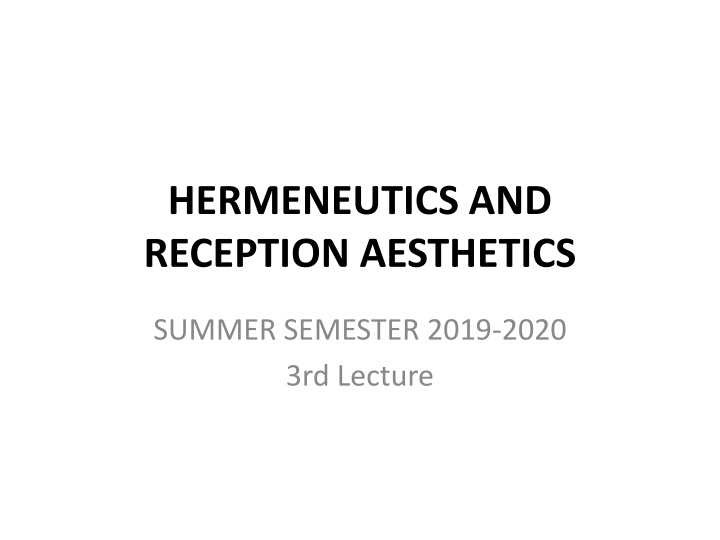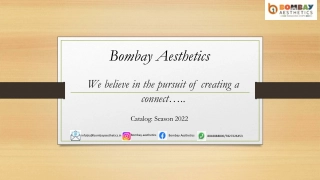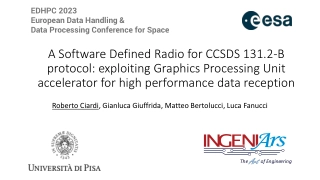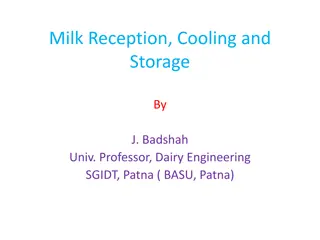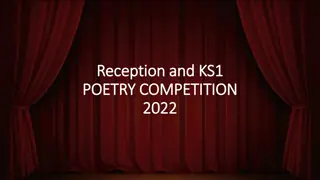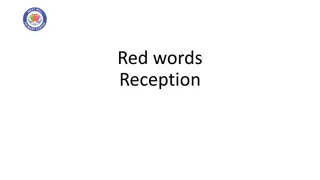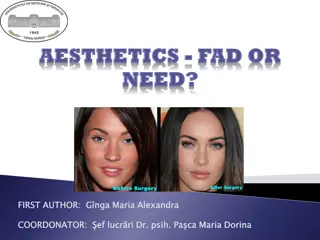RECEPTION AESTHETICS
Hermeneutics and reception aesthetics are explored in the context of ambiguous meanings and the relationship between subject and object. Key concepts such as intentionality, Dasein, and existential structure are discussed, drawing from the works of notable philosophers like Georgia Warnke, Edmund Husserl, and Martin Heidegger. Delve into the complexities of understanding and interpretation within the intersection of tradition, reason, and consciousness.
Download Presentation

Please find below an Image/Link to download the presentation.
The content on the website is provided AS IS for your information and personal use only. It may not be sold, licensed, or shared on other websites without obtaining consent from the author.If you encounter any issues during the download, it is possible that the publisher has removed the file from their server.
You are allowed to download the files provided on this website for personal or commercial use, subject to the condition that they are used lawfully. All files are the property of their respective owners.
The content on the website is provided AS IS for your information and personal use only. It may not be sold, licensed, or shared on other websites without obtaining consent from the author.
E N D
Presentation Transcript
HERMENEUTICS AND RECEPTION AESTHETICS SUMMER SEMESTER 2019-2020 3rd Lecture
Hermeneutic understanding is necessary where meaning remains ambiguous, where a potential consensus is disturbed and where coming to an understanding therefore requires sorting out difficulties, using one s own language or point of view to get clear on another and extending one s own language to see the point of what is said in another , Georgia Warnke, Hermeneutics, Tradition, and Reason, Polity Press, Cambridge 1987, p. 111.
Relation between subject and object Extremes: (1) Reduction to object - objectivistic science (i.e. mechanistic (meta-)physics). World is conceived as a complex of objects which have clearly definable properties. Subject is sidelined. (2) Reduction to subject - the outer world is only illusion or product of one s mind solipsistic idealism, relativism
Intentionality basic characteristic of our consciousness, it characterizes the correlative relation between the object and the subject. It focuses on the way how the object is given to our mind. Edmund Husserl (1859 1938); main works: Logical Investigations (1900-1901), Ideas Pertaining to a Pure Phenomenology and to a Phenomenological Philosophy (1912-13), Crisis of the European Sciences and Transcendental Phenomenology (unfinished work, published after death).
Martin Heidegger (1889 1976) Dasein the being to which the world is disclosed. existence of beings (i.e. things) existence of Dasein (proper to human being) Dasein is distinguished by the fact that, in its very Being, that Being is an issue for it Dasein: it is put in the world more deeply than other beings (things, animals). Existentials Categories
The ontological-existential structure of Dasein consists of "thrownness" (Geworfenheit), "projection" (Entwurf), and "being-along-with"/"engagement" (Sein-bei). These three basic features of existence [existentials] are inseparably bound to the world. They characterize a fundamental disclosure of being in the world .
Temporal character of Being The original essential structure of 'being-in- the-world' (in der Welt sein) of Dasein is care (Sorge). It unites three basic structuring moments: past, present, future; facticity, fallenness, existentiality. into the possibilities forgetfulness among the possibilities toward its possibilities ahead-of-itself/being-already-in-(the world)/as being-alongside-entities
1. Facticity the being-already-in-the-world characterized by our moods; situatedness, thrownness. Our plans and projects are never utter object of our choice, we are rather thrown into them since our situation conditions what possibilities will be revealed to us and what will not. All knowledge is constituted by our moods.
2. Existentiality the-being-ahead-of-itself characterized by our possibilities, by our focus toward future. The fundamental concern of Dasein about himself is care : in its very Being its own Being is an issue for it [diesem Seiendem in seinem Sein um dieses Sein selbst geht]. The things we encounter in the world are projected with regard to our possibilities. Our primordial relation to world is ruled by means of projects of our understanding.
Epistemology ontology theoretical view (or explanation) primordial understanding. Understanding is not so much a way of cognition/knowledge, but rather be familiar with the world that stems from the given situation in which Dasein is situated and by means of which he delimits its framework. E.g. the door; onta pragmata for what ; pragmaticism.
Priority of possibility in case of Dasein The way of Being of Dasein is primarily a being of possibility, understanding shows and projects these possibilities. The possibility of ordinary being is ontologically inferior to reality and necessity, while possibility is the ultimate delimitation in case of Dasein.
Category of modality (1) necessity what is necessarily and universally valid. Truths of natural laws, truths of mathematics - Sciences, philosophy. (2) reality the truth of mere facts. E.g. truths of everyday life, historical events. Contingent, non-repeatable. History. (3) possibility what can happen.
3. Fallenness the being alongside entities This is the way how Dasein most often lives in his average everydayness. Here, Dasein escapes from the authenticity. He/she is pulled down by things and others: Get a job. Go to work. Get married. Have children. Follow fashion. Act normal. Walk on the pavement. Watch TV. Obey the law. Save for your old age. Anxiety everyday life, naivety, the anonymous they [das Man].
Understanding, interpretation, assertion Interpretation [in Czech v klad ] it is grounded in understanding; it is a developed kind of understanding. In interpretation, constantly exercised understanding understands itself. By interpreting, we clarify the possibilities that are projected by understanding - we clarify fore- understanding. to realize one's own fore-structure of understanding.
A fore-structure of understanding 1. Fore-having - this is the global view by means of which one interprets the given being. 2. Fore-sight it determines the most appropriate interpretation with regard to fore-having . 3. Fore-conception the interpretation has always (with or with no reserves) decided to apply certain concepts.
meaning it is always already articulated by a meaningful interpretation; it is structured: by fore-having, fore-sight and fore-conception. From them, the projection is projected and from them is understandable something as something
